Physical Properties of Gemstones - A Complete book
As a gemologist and someone who handles gemstones every day, a lot can be identified about a gemstone simply by looking at it and using some basic geological knowledge.
Physical Properties of Gemstones:
People who handle gemstones frequently can identify gemstones based purely on their physical properties.
Weight or Specific Gravity:
- This relates to how heavy a specific size of gemstone feels; for example, a diamond dealer will know that a 6.5 mm diamond will weigh 1 carat and how the diamond feels in the hand because it has a specific gravity of 3.52.
- Another diamond simulant, such as Cubic Zirconia, has a specific gravity of 5.6, so a Cubic Zirconia of 5mm will feel a lot heavier than a diamond.
- This technique is also known as heft and can be practiced by picking up different gemstones every day and just feeling how heavy it is compared to how big they are.
- To test this for yourself, pick something like an opal, feel how heavy it feels in your hand. Bounce it up and down, develop a feeling for it, and then pick up any other gemstone you have.
- Opal is very light with a specific gravity of 1.45, so even larger opals feel light compared to smaller colored gemstones. You can also check our Loose Gems Stones here.
Hardness and the MOHS Scale:
 Hardness and the MOHS Scale
Hardness and the MOHS Scale
- What is hardness? It is the resistance of a gemstone to scratching, measured on a scale called the MOHS scale.
- As you know, Diamond is the hardest one. This gemstone, with a hardness of 10, and only gemstone that can scratch another diamond; nothing else can.
- Corundum (Ruby & Sapphire) is a 9, so it is also very hard.
- On the other hand, Quartz has a MOHS hardness of 7, which is a significant hardness number.
- In jewelry, it is generally recommended to use a gemstone with a seven or greater hardness.
Why? Well, Quartz is a very common mineral, and the air around us actually contains minute particles of Quartz.
- If you think about how much dirt and dust can get on your ring, you can assume that there is a small amount of Quartz on your beautiful gemstone ring, so when you wipe the dirt, the Quartz will scratch whatever surface it is on.
- If your gemstone has a Mohs hardness of 7 or less, it will become scratched and slowly lose its luster.
- Since the diamond is the hardest, it explains why a 100 years old diamond still sparkles even to this day.
- Hardness can be used as a clue while buying gemstones. For example, suppose someone is trying to sell you a white sapphire (Mohs hardness of nine), and it seems scratched, or the facet junctions look like they have eroded.
- In that case, the question should be asked if this is really a white sapphire or something else, like glass?
Durability - Physical Properties of Gemstones:
- This is a very important property of a gemstone because it can be related to many aspects such as corrosion to resistance, resistance from chemical attack (e.g., perfume), resistance to mechanical shock, as well as resistance to exposure to light.
- Let's look at the diamond again, which is the hardest gemstone, meaning it cannot be scratched. Still, it is not very tough because the diamond has cleavage, meaning along individual planes; it is weak against mechanical shock.
- Some gemstones, such as Pearls, can be damaged by everyday things such as perfume, perspiration, and other chemicals. It requires special care, such as only wearing them after you have finished putting your makeup on and perfume on, to keep the pearly luster.
- Another factor for durability concern is exposure to light. This might seem ridiculous, but some gemstones suffer from reducing in color when exposed to sunlight.
- The most popular gemstones to have this property are Imperial Topaz and kunzite. Both of these can be treated via irradiation, and these treated gemstones can lose color when exposed to sunlight.
- Some gemstones have been known to even become colorless.
- Kunzite is also known as the Evening gemstone for this same reason.
- Another gemstone Maxixe, has the natural property of being a stunning blue when it comes out of the ground and then becomes crystal clear within 30 minutes of sunlight exposure.
Cleavage - Physical Properties of Gemstones:
 Cleavage refers to a property in some gems where there is an atomic weakness along individual planes in the gemstone
Cleavage refers to a property in some gems where there is an atomic weakness along individual planes in the gemstone- Cleavage refers to a property in some gems where there is an atomic weakness along individual planes in the gemstone. These planes can cause them to break easily when exposed to mechanical shock.
- Cleavage is also identified by step-like breaks on the gemstone with a gleaming luster.
- If a gemstone is broken and shows a granular fracture, then it does not have cleavage.
- Gemstones can have basal cleavage, such as Topaz and mica, where the weakness is parallel to the crystal base.
- Other gems have prismatic cleavage, which is a weakness parallel to the crystal faces. For example, diamond has cleavage that is parallel to the octahedral faces. On the other hand, kunzite has an ample looking cleavage, where it creates small triangular shapes on the surface of the gemstone.
- Cleavage is also used to separate crystals that look similar. For example, Topaz has basal cleavage, whereas Quartz has no cleavage. If the crystal base has step-like breaks, it is a good indication for Topaz.
Twinning - Physical Properties of Gemstones:
- Twinning is defined as a change in crystal growth direction within a gemstone. Spinel has a beautiful twin (known as a contact twin) where the spinel octahedral shape stops and begins growing in another direction, which can be seen inside a cut gemstone, which indicates the gem is natural.
- Quartz has twining (known as penetration twinning), as can be seen in most Quartz specimens.
- Another variety of Quartz (Amethyst), has another twinning known as Brazil Twinning, which has been used to separate Quartz from the synthetic counterpart.
- Chrysoberyl has what is known as a cyclic twin, where the gem continually changes direction and completes a full circle.
Crystal Habit - Physical Properties of Gemstones:
 Crystal Habit is the physical shape of how the gem crystals grow, not to be confused with the crystal system of a gemstone.
Crystal Habit is the physical shape of how the gem crystals grow, not to be confused with the crystal system of a gemstone.- Spinel and diamond have a crystal habit of Octahedral.
- Tourmaline has a round-triangle appearance, while Garnet is a rhombic dodecahedron.
- Corundum (Ruby & Sapphire) has what is known as the bi-pyramid hexagonal crystal habit.
- All these gemstone habits can be modified and sometimes do not resemble the official crystal habit at all.
Crystal System - Physical Properties of Gemstones:
This is how atoms inside the crystal lattice are structured. This determines how hard the gemstone is, how the gem reacts to light, and even the gemstone's durability. The crystal systems are Cubic, Hexagonal, Tetragonal, Trigonal, Orthorhombic, Triclinic, and Monoclinic.
Tags:
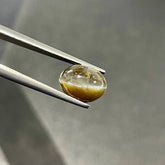
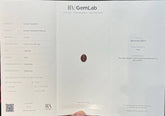
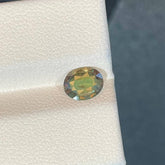
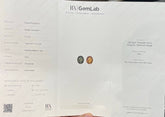
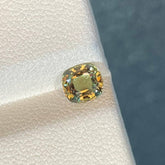
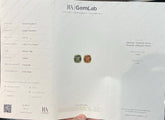
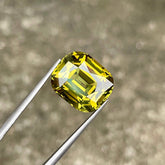
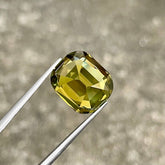
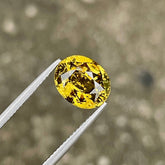
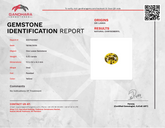
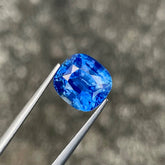

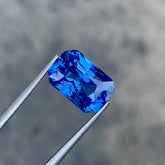

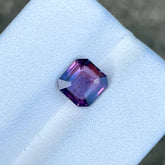

Leave a comment
Please note, comments need to be approved before they are published.